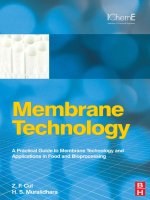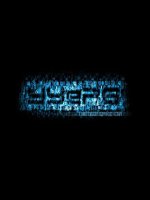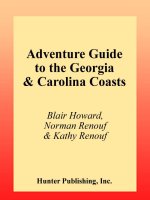maxwell - synthetic nitrogen products - practical guide to the products and processes (springer, 2005)
Bạn đang xem bản rút gọn của tài liệu. Xem và tải ngay bản đầy đủ của tài liệu tại đây (17.62 MB, 450 trang )
TeAM
YYeP
G
Digitally signed by
TeAM YYePG
DN: cn=TeAM YYePG,
c=US, o=TeAM YYePG,
ou=TeAM YYePG,
email=
Reason: I attest to the
accuracy and integrity of
this document
Date: 2005.06.14
11:16:54 +08'00'
Synthetic Nitrogen Products
This page intentionally left blank
Synthetic Nitrogen Products
A Practical Guide to the Products
and Processes
Gary R. Maxwell
DuPont Chemical Solutions Enterprise
Memphis, Tennessee
KLUWER ACADEMIC PUBLISHERS
NEW YORK, BOSTON, DORDRECHT, LONDON, MOSCOW
eBook ISBN: 0-306-48639-3
Print ISBN: 0-306-48225-8
Print ©2004 Kluwer Academic/Plenum Publishers
All rights reserved
No part of this eBook may be reproduced or transmitted in any form or by any means, electronic,
mechanical, recording, or otherwise, without written consent from the Publisher
Created in the United States of America
New York
©2005 Springer Science + Business Media, Inc.
Visit Springer's eBookstore at:
and the Springer Global Website Online at:
PREFACE
Industrial products that are made from, or contain, nitrogen are described in
parts of some encyclopedias and standard reference works. However it is not
always simple to determine from these varied sources the present status of the
technology and markets for various nitrogen products.
We therefore perceived a need for a text that provides a comprehensive
description of: 1) products that are made from or that contain nitrogen; 2) the
processes that produce these products; and 3) the markets that consume these
products. I have attempted to present the material in a standardized format that
should make this book easy to use and helpful to the readers. The standard
format for each product is: Introduction, Process, Production, and Uses, with
some variations in different chapters.
This book provides information that could be used by a wide range of
readers:
Fertilizer companies—to evaluate different production processes and review
general trends in the market.
Basic chemical companies—to evaluate different production processes and
review general trends in the market.
Specialty chemical companies—to investigate new chemical production
and/or sales opportunities and the processes that could make those sales a
possibility.
Chemical distributors—to obtain a feel for the general market size for some
chemicals and the basic handling and distribution procedures for various
chemicals.
Engineering Companies—to evaluate different production processes and
review general trends in the market.
Engineering and Chemistry Students—to learn more about practical
applications of the principals that they have experienced in their classrooms
and laboratories.
v
vi
SYNTHETIC NITROGEN PRODUCTS
Business Students—to obtain information so they can evaluate industries
related to the nitrogen or nitrogen products.
University professors—to obtain practical examples of how different
processes and products are used.
Government Employees—to obtain information for elected officials to
support their legislative proposals, to help develop market-based programs
within agencies and to provide guidelines in the preparation of regulations
that affect nitrogen products.
Investment Analyst and Venture Capital Companies—to gain an
understanding of the technology that is used to produce various chemicals
and to review past trends in various markets.
This information could be useful to companies in most regions of the world:
North American companies, South American companies, Asian Pacific
Companies, Middle East companies, European companies, Central
American and Caribbean companies, and South African companies.
However, developing or third-world countries will probably benefit the
most from the comprehensive information in this book.
The volume is arranged into chapters for each of the nitrogen products that
are discussed. The first four chapters provide basic information about nitrogen
and nitrogen products and processes. Chapters 5 through 22 provide detailed
descriptions of various nitrogen or nitrogen-containing products.
I have provided numerous tables, figures, and graphs to provide a visual
summary and description of much of the information that is discussed. In
addition, I have used an extensive number of references that allow the reader to
obtain additional information about the subject of interest to them. I have also
attempted to provide as many Internet references as possible. The Internet
provides a vast amount of resources and references that are readily available and
allow individuals to quickly obtain information that they need so they can be
more productive in their endeavors.
The index, containing numerous key words, enables the reader to rapidly
find the required information.
I would like to express my thanks to Jim Kent for his encouragement and
for suggesting to the publisher that this book should be written. Many colleagues
inside the DuPont Company supported the development of this book by reading
parts of the manuscript and providing me with reference material through our
library and information services. I would also like to thank my uncle, Charles D.
Scott, PhD for taking the time to review some of the key chapters in this book.
Several companies and organizations graciously gave us permission to use their
copyrighted information in this book and made suggestions on how to improve
the description of their technologies. Without their cooperation, this book would
not have been very informative.
I would like to thank Kluwer for their confidence in me in the development
of this book as well as Ken Howell, Senior Editor, Brian Halm, Production
PREFACE
vii
Editor, and Catherine Wilson, Editorial Assistant, for their assistance and
encouragement in preparing this book.
Gary R. Maxwell
DuPont Company
This page intentionally left blank
CONTENTS
INTRODUCTION TO NITROGEN
NITROGEN CHARACTERISTICS
NITROGEN SEPARATION AND PURIFICATION
PRODUCTS UTILIZING NITROGEN
NITROGEN FIXATION
NITROGEN OXIDES
NITRIDES
AMMONIA
NITROGEN PRODUCTS: PRODUCTION AND CONSUMPTION
NITROGEN INDUSTRY: CAPACITY AND PRODUCTION
NITROGEN PRODUCT CONSUMPTION
AMMONIA PRODUCTION, CONSUMPTION, AND
FORECASTS
INDUSTRIAL NITROGEN
WORLD TRADE IN NITROGEN PRODUCTS
Ammonia Trade
Trade in Major Nitrogen Products
ENVIRONMENTAL ISSUES
HYDROGEN PRODUCTION
HYDROGEN PRODUCTION AND USES
MANUFACTURING PROCESSES
Reforming
Partial Oxidation
Coal and Coke Gasification
1.
1.1.
1.2.
1.3.
2.
2.1.
2.2.
2.3.
3.
3.1.
3.2.
3.3.
3.4.
3.5.
3.5.1.
3.5.2.
4.
5.
5.1.
5.2.
5.2.1.
5.2.2.
5.2.3.
1
1
3
6
7
7
10
11
15
16
18
25
30
33
33
36
43
47
50
53
57
90
106
ix
x
CONTENTS
By-Product Hydrogen
Electrolysis
Other Processes
New Developments
Initial Purification of Synthesis Gas
Carbon Monoxide Shift
Removal of Sulfur Compounds and Carbon Dioxide
Final Purification of Synthesis Gas
Compression
AMMONIA SYNTHESIS
REACTION RATE
CATALYSTS
ENERGY EFFICIENCY
AMMONIA PLANT DESIGN
Kellogg Brown & Root Advanced Ammonia
Process–Plus (KAAP)
Haldor Topsøe
Linde Ammonia Concept (LAC)
Leading Concept Ammonia (LCA)
Ammonia Casale
Uhde
Converter Comparison
AMMONIA SEPARATION
LARGE CAPACITY AMMONIA PLANTS
KBR Design
Haldor Topsøe
Uhde
Lurgi and Ammonia Casale
AMMONIA PRODUCTION COSTS
MATERIALS OF CONSTRUCTION
USES OF AMMONIA
CHEMICAL PRODUCTION AND OTHER USES
Acrylonitrile
Caprolactam
Miscellaneous Amines and Nitriles
Metallurgy
Refrigeration
Pulp and Paper
Phosphate Ore Flotation
Household Cleaners
Air Pollution Control
5.2.4.
5.2.5.
5.2.6.
5.2.7.
5.2.8.
5.2.9.
5.2.10.
5.2.11.
5.2.12.
6.
6.1.
6.2.
6.3.
6.4.
6.4.1.
6.4.2.
6.4.3.
6.4.4.
6.4.5.
6.4.6.
6.4.7.
6.5.
6.6.
6.6.1.
6.6.2.
6.6.3.
6.6.4.
6.7.
6.8.
7.
7.1.
7.
1.1.
7.
1.2.
7.
1.3.
7.1.4.
7.
1.5.
7.
1.6.
7.1.7.
7.1.8.
7.1.9.
116
117
120
120
128
135
138
155
162
163
165
169
175
175
178
179
180
181
183
184
187
187
189
189
189
190
192
195
197
199
199
199
200
200
200
201
201
201
201
201
SYNTHETIC NITROGEN PRODUCTS
xi
Uranium Concentrate Production
Water Purification
Waste Treatment
Duplicating Processes
Fabric Treatment
Semiconductor Industry
Miscellaneous
GENERAL AMMONIA INFORMATION
AMMONIA PROPERTIES
AMMONIA TOXICITY
AMMONIA QUALITY
DISTRIBUTION AND STORAGE
MATERIALS OF CONSTRUCTION
AMMONIA PRICE
NITRIC ACID
PHYSICAL PROPERTIES
PROCESSES
Chemistry
Catalysts
Operating Pressure
Concentration of Nitric Acid
Water Balance in Dual Pressure Azeotropic Plants
Direct Strong Acid Processes
STABILIZERS
POLLUTION ABATEMENT
Absorption Abatement
Adsorption Abatement
Selective Catalytic Reduction
Non-Selective Catalytic Reduction
Absorption Plus Selective Catalytic Reduction
Nitrous Oxide Removal
MATERIALS OF CONSTRUCTION
Materials for Weak Acid Processes
Materials for Strong Acid Processes
PRODUCTION
STORAGE AND DISTRIBUTION
USES OF NITRIC ACID
AMMONIUM NITRATE
PROCESSES
7.1.10.
7.1.11.
7.1.12.
7.1.13.
7.1.14.
7.1.15.
7.1.16.
8.
8.1.
8.2.
8.3.
8.4.
8.5.
8.6.
9.
9.1.
9.2.
9.2.1.
9.2.2.
9.2.3.
9.2.4.
9.2.5.
9.2.6.
9.3.
9.4.
9.4.1.
9.4.2.
9.4.3.
9.4.4.
9.4.5.
9.4.6.
9.5.
9.5.1.
9.5.2.
9.6.
9.7.
9.8.
10.
10.1.
202
202
202
202
202
202
203
205
205
207
208
209
210
211
213
213
215
217
219
223
228
230
232
233
234
234
236
236
237
237
238
245
245
246
246
248
249
251
251
xii
CONTENTS
Neutralization
Steam Purification
Evaporation
Prilling
Granulation
Air Abatement Equipment
PRODUCTION
STORAGE AND DISTRIBUTION
USES
UREA
PROCESSES
Prilling
Granulation
Materials of Construction
PRODUCTION
STORAGE AND DISTRIBUTION
USES
AMMONIUM PHOSPHATES AND AMMONIUM SULFATE
AMMONIUM PHOSPHATES
MAP Powder Processes
DAP Powder Processes
Granular DAP and MAP Processes
Production of Ammonium Phosphates
Uses of Ammonium Phosphates
AMMONIUM SULFATE
Production of Ammonium Sulfate
Uses of Ammonium Sulfate
10.1.1.
10.1.2.
10.1.3.
10.1.4.
10.1.5.
10.1.6.
10.2.
10.3.
10.4.
11.
11.1.
11.1.1.
11.1.2.
11.1.3.
11.2.
11.3.
11.4.
12.
12.1.
12.1.1.
12.1.2.
12.1.3.
12.1.4.
12.1.5.
12.2.
12.2.1.
12.2.2.
MELAMINE
PROCESSES
PRODUCTION
USES
ALIPHATIC AMINES
ALIPHATIC AMINES
Methylamines
Other Alkyl Amines
Production
Uses
13.
13.1.
13.2.
13.3.
14.
14.1.
14.1.1.
14.1.2.
14.1.3.
14.1.4.
253
258
258
260
261
262
262
263
265
267
269
277
279
280
281
283
284
285
285
286
288
289
291
292
293
296
297
299
300
305
305
307
307
307
313
313
315
SYNTHETIC NITROGEN PRODUCTS
xiii
ETHANOLAMINES AND SECONDARY PRODUCTS
ETHANOLAMINE PROCESS
PRODUCTION
USES
SECONDARY PRODUCTS OF ETHANOLAMINE
Morpholine
Ethylenimine
ETHYLENEDIAMINE AND CHELATING AGENTS
ETHYLENEDIAMINE
Ethylenediamine Production
Ethylenediamine Uses
CHELATING AGENTS
Manufacturing Processes for Chelating Agents
Production and Uses of Chelating Agents
HEXAMETHYLENETETRAMINE (HEXAMINE)
HEXAMINE PROCESSES
PRODUCTION
USES
HYDRAZINE
PROCESSES
Raschig Process
Raschig/Olin Process
Hoffmann (Urea) Process
Peroxide Process
Bayer Ketazine Process
Materials of Construction
PRODUCTION
USES
HYROGEN CYANIDE
SAFETY
MANUFACTURE
Andrussow Process
BMA Process
Fluohmic Process
Formamide Process
Methanol Process
Acrylonitrile Process
15.
15.1.
15.2.
15.3.
15.4.
15.4.1.
15.4.2.
16.
16.1.
16.1.1.
16.1.2.
16.2.
16.2.1.
16.2.2.
17.
17.1.
17.2.
17.3.
18.
18.1.
18.1.1.
18.1.2.
18.1.3.
18.1.4.
18.1.5.
18.1.6.
18.2.
18.3.
19.
19.1.
19.2.
19.2.1.
19.2.2.
19.2.3.
19.2.4.
19.2.5.
19.2.6.
317
317
321
322
322
322
324
325
325
326
327
327
327
329
333
334
334
335
337
338
338
339
342
342
344
344
346
346
347
348
349
350
351
354
355
357
357
xiv
CONTENTS
Other HCN Processes
Materials of Construction
PRODUCTION
USES
ANILINE AND NITROBENZENE
ANILINE
Aniline Processes
Aniline Production
Aniline Uses
NITROBENZENE
Nitrobenzene Processes
Nitrobenzene Production
Nitrobenzene Uses
CAPROLACTAM
PROCESSES
Conventional Process
DSM/HPO (Stamicarbon) Process
BASF Process
Inventa-NO Reduction Process
PNC or Toray Process
SNIA Viscosa Process
Recovery from Nylon 6 Waste
CAPROLACTAM PRODUCTION
CAPROLACTAM USES
OTHER NITROGEN COMPOUNDS
ADIPONITRILE AND HEXAMETHYLENEDIAMINE
ACRYLONITRILE
Process Technology
Production
Uses
METHYLMETHACRYLATE
Process Technology
Production
Uses
ACRYLAMIDE
Process Technology
Production
Uses
DIMETHYLFORMAMIDE
19.2.7.
19.2.8.
19.3.
19.4.
20.
20.1.
20.1.1.
20.1.2.
20.1.3.
20.2.
20.2.1.
20.2.2.
20.2.3.
21.
21.1.
21.1.1.
21.1.2.
21.1.3.
21.1.4.
21.1.5.
21.1.6.
21.1.7.
21.2.
21.3.
22.
22.1.
22.2.
22.2.1.
22.2.2.
22.2.3.
22.3.
22.3.1.
22.3.2.
22.3.3.
22.4.
22.4.1.
22.4.2.
22.4.3.
22.5.
358
358
358
359
361
361
362
365
367
367
368
370
371
373
374
375
378
380
382
382
384
387
388
389
391
391
392
392
392
394
394
394
395
395
395
395
396
396
397
SYNTHETIC NITROGEN PRODUCTS
xv
Process Technology
Production
Uses
CALCIUM CYANAMIDE
OTHER COMPOOUNDS
References
Index
22.5.1.
22.5.2.
22.5.3.
22.6.
22.7.
397
397
398
398
399
401
411
This page intentionally left blank
1
INTRODUCTION TO NITROGEN
Nitrogen is one of the most familiar substances on earth. It makes up 78%
of the air that surrounds us. Nitrogen is found in a combined form in a few
mineral compounds‚ such as potassium nitrate and sodium nitrate. It is also in a
host of complex organic compounds‚ i.e.‚ proteins that all animals use as food to
build up tissues.
Nitrogen products are among the most important chemicals produced in the
world today. The largest quantities are used as fertilizers‚ but nitrogen products
also find very important uses in the manufacture of nylon and acrylic fibers‚
methacrylate and other plastics‚ foamed insulation and plastics‚ metal plating‚
gold mining‚ animal feed supplements‚ herbicides‚ and many pharmaceuticals.
1.1. NITROGEN CHARACTERISTICS
Nitrogen is a non-toxic‚ non-flammable‚ colorless‚ tasteless and odorless
gas. It is slightly lighter than air with a specific density of 0.967 (air = 1.0). It is
non-detectable by any of the human senses. It is considered non-hazardous and
is listed along with other utilities on some sites. Thus we can often be lulled into
a false sense of security and complacency concerning nitrogen. As a gas‚
nitrogen is a “silent-killer”‚ and some people consider it to be one of the most
dangerous gases. This is because a person can suffocate in an enclosure that
contains a nitrogen atmosphere or at an opening on a vessel being purged with
nitrogen and never know that they were deprived of oxygen – until it is too late.
Inhalation of a nitrogen-enriched atmosphere may cause dizziness‚
drowsiness‚ nausea‚ vomiting‚ excess salivation‚ diminished mental alertness‚
loss of consciousness‚ and death. If a person enters an atmosphere of nitrogen‚
he or she can lose consciousness without any warning symptoms in as little as 20
seconds. Death can follow in 3 to 4 minutes. A person falls as if struck by a
1
2
SYNTHETIC NITROGEN PRODUCTS
blow on the head. One deep breath of 100% nitrogen can be fatal because
nitrogen will displace carbon dioxide in the body completely.
Breathing is stimulated and controlled by carbon dioxide present in
the lungs. As the level increases‚ the brain sends a message to increase
respiration. When the level drops‚ the rate of respiration will also decrease
in order to maintain the proper balance. In the absence of a carbon dioxide
signal to the brain‚ breathing stops. While some chemicals or substances may
effect some people to a greater degree than they will others - based on our
tolerance of the substance‚ nitrogen does not discriminate. It affects every
individual the same way. It displaces oxygen. If we do not have enough oxygen‚
we will die.
No one should work in or enter atmospheres containing less than 19.5%
oxygen - unless they are equipped with a self-contained breathing apparatus or a
breathing air mask. This is also true of rescue personnel who can be overcome
by the same oxygen-deficient atmosphere as the initial victim
39‚ 146
. While it is
widely known that exposure to excessive amounts of nitrogen inside equipment
can result in swift death‚ the fact that people can be equally affected while
standing near openings of nitrogen-purged equipment may be less understood.
This situation must not be underestimated! Fatalities have occurred when
personnel were working outside an open manhole on a vessel that was being
purged with nitrogen
146
.
Nitrogen gas is classified as a “simple asphyxiant”. This means nitrogen
will displace oxygen in high concentrations and create oxygen deficient
(<19.5%) atmospheres without significant physiological effects. Exposure limits
are not normally given to “simple asphyxiants” because the limiting factor is the
available oxygen. Therefore‚ nitrogen has no exposure limit.
In addition to being an inhalation hazard‚ Liquid Nitrogen is a colorless‚
odorless‚ and extremely cold under pressure. Contact with this liquid or the cold
vapors can cause severe frostbite.
The properties of nitrogen are listed in Table 1.1.
TABLE 1.1
Physical Properties of Nitrogen
Property
Molecular Weight
Boiling Point‚ °C (°F)
Freezing Point‚ °C (°F)
Critical Temperature‚ °C (°F)
Critical Pressure‚ kPa (psi)
Critical Volume‚ cc/g-mol
Specific Heat at 20°C and 147 psia
(BTU/lb °F)
(BTU/lb °F)
Specific Heat at 2 1°C
Value
14.0067
-195.8 (-320.5)
-209.86 (-346.0)
-146.95 (-232.4)
3‚393 (492.3)
89.5
0.247
0.176
1,046
INTRODUCTION TO NITROGEN
3
1.2.
NITROGEN SEPARATION AND PURIFICATION
Industrial demand for high purity nitrogen is met by producing most of the
nitrogen from liquid air. After air has been liquefied by pressure and cooling‚ it
consists almost entirely of a mixture of liquid oxygen (which boils at –183°C)
and liquid nitrogen (which boils at –195°C). By careful control it is possible to
separate these two gases by fractional distillation and produce nitrogen with a
purity of 99.9% or greater
1
.
TABLE 1.1 Physical Properties of Nitrogen (continued)
Property
Heat of Formation of gas‚ (kJ/mole)
Heat of Fusion at Melting Point (J/g)
Heat of Vaporization at Boiling Point
J/g
BTU/lb
Solubility in Water‚ g per 100 g at 760 mm
0°C
20°C
40°C
60°C
Specific Gravity
Relative to Air (at 1.0)
-195.8°C (Liquid)
-252°C (Solid)
Specific Volume (at 70°F and 1 atm)‚
Density‚
At 20°C
Liquid at Boiling Point
Solid at Melting/Freezing Point
Thermal Conductivity‚ W/m-K
Gas@21°C
Liquid @ -200°C
Value
1.41
0.3604
25.6
199
85.5
0.00239
0.00189
0.00139
0.00105
0.967
0.808
1.026
13.80
1.16
808.6
1028
0.026
0.14456
4
SYNTHETIC NITROGEN PRODUCTS
Nitrogen production via PSA (pressure swing absorption) is based on the
principle that nitrogen and oxygen have different absorption rates on carbon
molecular sieves (CMS). This principle was first demonstrated commercially in
the Bergbau-Forschung (or BF) process that separates nitrogen from air by
selective adsorption over activated carbon in a PSA system
3
.
The KURASEP (Kuraray
Sep
aration) Process for separating nitrogen from
air is a variant of the PSA process in which a carbon molecular sieve is used as
the adsorbent
1
. The Kuraray Chemical Company developed this process
3
. This
process can produce “nitrogen gas” containing less than 100 ppm oxygen
and five-nines nitrogen can be produced
if nitrogen yield is sacrificed slightly.
The MOL-nitrogen (Molecular Sieve
P
ressure
S
wing
A
dsorption) process is
a version of the PSA process for separating nitrogen from air. It was developed
by Kobe Steel
1
. Most PSA processes for nitrogen production use molecular
sieve carbon as the adsorbent, but this one uses Zeolite X. Water and carbon
dioxide are first removed in a two-bed PSA system, and then the nitrogen is
concentrated and purified in a three-bed system
4
. The purity of the product is
The NitroGEN (Nitrogen
Gen
erator) process is a version of the VPSA
(Vacuum Pressure Swing Adsorption) process for separating nitrogen from air
by vacuum pressure swing adsorption
1
. It was developed by the Linde Division
of Union Carbide Corporation. The name has also been used for two membrane
systems for extracting pure nitrogen from air
5,6
.
Depending on volume and purity requirements, nitrogen can be supplied by
several different production systems or delivery systems. Figure 1.1 illustrates
some of these systems
159
. Liquid refers to delivery by trucks or in cylinders;
Permeation refers to a membrane system; Adsorption refers to a PSA system;
and Distillation refers to a cryogenic air separation plant.
Figure 1.1. Nitrogen supply options based on flowrate and nitrogen purity.
(Copyrigh
t
2002 Air Products and Chemicals‚ Inc.)
INTRODUCTION TO NITROGEN
5
A flowsheet for a plant that produces nitrogen in a cryogenic air separation
plant is shown in Figure 1.2
150
.
Figure 1.2. Nitrogen production flowsheet in a cryogenic separation plant.
In a cryogenic nitrogen production process the following steps occur:
Air, which contains 78% Nitrogen, 21% Oxygen and 0.9% Argon, is
fed to the process.
The air is filtered to remove particulates.
The air is then compressed to 77 psi.
Next the air enters an Oxidation Chamber that removes hydrocarbons
by converting them to carbon dioxide and water
The stream then passes through a water separator to remove most of the
water.
The process stream then enters a heat exchanger that a) cools the
stream to -168
°
C and b) removes the and as solids.
The cooling for the heat exchanger is provided by a small amount of
nitrogen and oxygen that are fed to an expander valve.
The stream that leaves the heat exchanger is primarily nitrogen and
oxygen.
This stream goes through another expander valve that cools it to -
190
°
C, and then it enters the fractionating column.
The nitrogen and oxygen are then separated based on boiling point
and
Further fractionation of the oxygen stream removes the argon and gives
a stream that is
Argon, with a boiling point of -183°C, can be obtained as a middle
fraction and distilled further.
1.
2.
3.
4.
5.
6.
7.
8.
9.
10.
11.
12.
6
SYNTHETIC NITROGEN PRODUCTS
1.3. PRODUCTS UTILIZING NITROGEN
Nitrogen does not unite easily with other elements to form compounds.
Therefore economical fixation of nitrogen from the atmosphere has been a
never-ending quest. At high temperatures and pressures nitrogen combines with
most of the elements to form nitrogen compounds although many of these
compounds are not very stable. It also reacts with metals and semimetals to
form nitrides.
When nitrogen combines with certain elements‚ it produces dyes that rival
the rainbow in the brilliance of their colors. With other elements nitrogen forms
drugs such as morphine‚ quinine and acetanilid that ease pain and combat
diseases. Nitrogen-bearing compounds are used to make some very deadly
compounds such as nitroglycerin‚ guncotton‚ and ptomaines. Some nitrogen
compounds provide pleasant-tasting flavors and sweet perfumes while others are
so vile in taste and odor that they are beyond description. In nitric acid we find
nitrogen in a strong acid while in ammonium hydroxide we have it in a well-
known base
7
.
In the rest of the book various synthetic nitrogen compounds will be
discussed. The production processes for these compounds will be described
along with the way the compound is used by society.
NITROGEN FIXATION
2
Nitrogen Fixation involves the combination of nitrogen from the air with
other elements to form other compounds. On the roots of beans‚ peas‚ clover
and other leguminous plants are nodules. When these nodules are examined
under a powerful microscope‚ they are found to be the homes of great masses of
‘nitrogen-fixing” bacteria. The bacteria have the ability to extract nitrogen from
the air and convert it into soluble nitrates. These nitrates renew the fertility of
soil since plants use them for food. Every plant must have nitrogen to live‚ but
no plant or animal can use free nitrogen for nourishment. Soluble compounds of
nitrogen must be present to make the soil fertile. Such compounds can then be
used by plants to produce proteins that in turn can then be used by animals to
produce tissues and enzymes. The physical basis of life is the plant or animal
cell. The content of such cells includes protoplasm and various organelles that
contain nitrogen-bearing compounds such as proteins and enzymes
7
. The
Nitrogen Cycle is shown in Figure 2.1 along with some examples of different
fixation processes
143
.
2.1. NITROGEN OXIDES
Most nitrogen products have been based on nitrogen oxides and ammonia;
so the history of fixation of nitrogen as nitrogen oxides and ammonia is of
interest.
The five oxides of nitrogen are
7
:
NO
Nitrous Oxide
Nitric Oxide
Nitrogen Trioxide
Nitrogen Dioxide
Nitrogen Pentoxide
7









